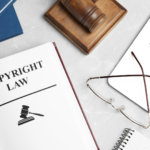America has seen a wave of protests since the current administration was elected. We’d like to take a moment to talk about your rights, and more importantly, how your right can be restricted legally. Enshrined as part of the First Amendment to the United States Constitution provides you with the right for freedom of assembly.
The relevant parts are: "Congress shall make no law... abridging... the right of the people peaceably to assemble, and to petition the Government for a redress of grievances." It gives individuals the right to come together for the purposes of their ideals.
There are two parts to the right. First, the freedom to peaceably assemble extends beyond just protests, but also allows people to freely create associations to promote and share their ideals. Members of organizations from the most benign to those that have a history of hate have the right to meet with one another if they are peaceable.
The second part is the ability to petition the Government for a redress of grievances. In other words, it gives people the right to complain to the government about their problems. People can and do write actual petitions to force the government to change policy, but there are other ways this is done such as mass protest.
If you’ve paid attention to news since 2000, you may wonder how this right works with so-called “free speech zones”, a euphemism for special areas where protesters are told they can assemble legally. These locations are often far away from the media and those they are protesting. This neutralizes the power of the protest.
The Supreme Court has agreed that governments cannot limit the content of the protest, that is, what they want to say. But they can limit the time, the place, and the manner of its expression. These limitations have to pass a four-fold test:
* The reason for the limitations have to be neutral with respect to content
* The scope of the limitations has to be narrowly drawn
* The reasons for the limitations have to serve a significant public interest
* They can’t shut down all channels of communication of the content
In certain cases, such as obscene content or deliberately inflammatory content, these standards can be lowered. Here’s an example. Are you allowed to protest on an interstate? Due to the traffic shutdown, it would be a great way to get media attention, but it is also very dangerous.
The government does have an interest in keeping the roads open and clear for both safety and trade reasons, and unless the protest was about the roads it would be content-neutral. There is a significant public interest in keeping the roads clear. Ideally, the government would offer a nearby alternative protest location. They also could not forbid media access since that would be another form of communication.
To prevent conflict in the first place, many governments have a process for groups to apply for a permit for a large assembly. But there are those who say that any limitation to the freedom of assembly, including free speech zones, violates the law. The ACLU has fought a number of cases on this issue with mixed results. If you are ever arrested for peaceably protesting or are told to move due to the content of your message, you should speak with a civil rights lawyer immediately. You could be protecting many others with your case.
Contact us today for a Free Consultation





